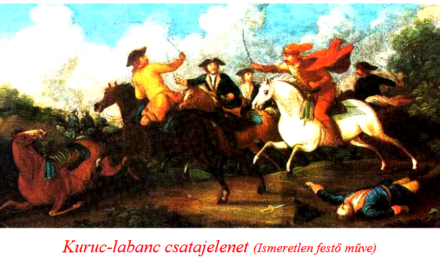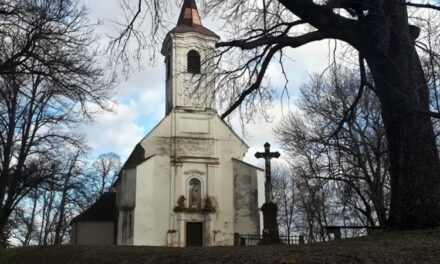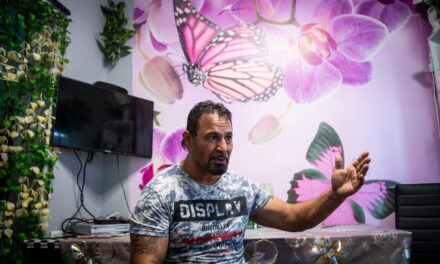"A nation that does not know its past does not understand its present, and cannot create its future!"
Europe needs Hungary... which has never let itself be defeated
The eventful century of the Árpád era was full of conflicts and successes from the accession to the throne of Kálmán III. Béla's death. Kálmán (1095-1116) and III. During the reign of Béla (1172-1196), six Árpád rulers came to the Hungarian throne. Kálmán, who was prepared for the service of the church from childhood and was finally consecrated as a bishop, had to fight with his brother, Prince Álmos . Szent László and some of the lords wanted to see Álmos on the Hungarian throne, who had previously been the governor of Croatia between 1091 and 1095 on behalf of Szent László. Let's add that this period was not successful for Álmos. Perhaps this also contributed to the fact that in 1095, according to the balance of power, Kálmán gained the throne. When he received permission from the Pope to get rid of the episcopal insignia, he was crowned king with the support of the majority of the lords. His first wife, Felicia , was from Sicily. His second wife, the princess of the Principality of Rus, Euphemia Rurik , came to Hungary from Kiev. The lords, because their own advancement and the interests of the country wanted it, refused to fight against each other any further. The brothers were forced to reconcile. However, Prince Álmos could not accept this for good. However, the fratricidal struggle did not serve the interests of the country. After all, from the Byzantine Empire to the German-Roman Empire, from the Principality of Rus through the country of the Kunis to Venice, the Kingdom of Hungary was surrounded by a ring of enemies. Álmos sought allies both abroad and at home in order to gain the throne.
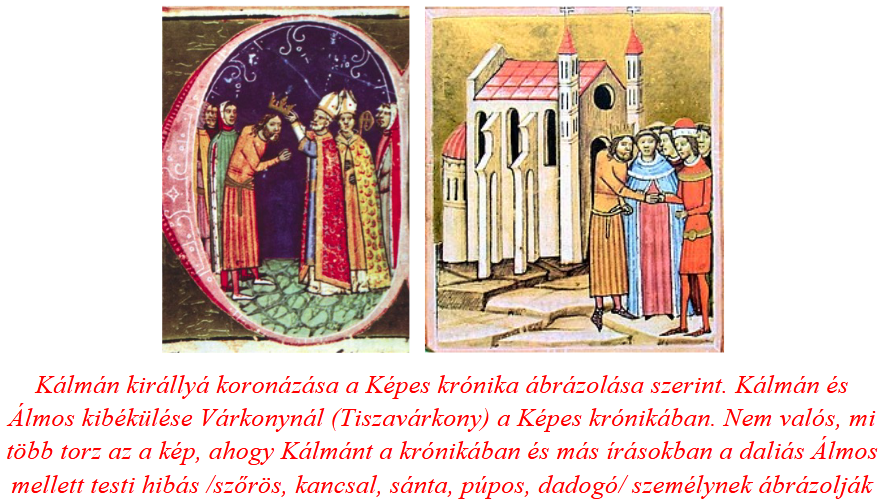
Álmos relented, but received the princely title and the huge land holdings that came with it as an atonement.
(This was the system of the duchy, which survived with more or less success in the following centuries. Explanation of the word: rex = king, dux = prince.) The rapid change in property relations divided the unity of the country and the power of the royal power. Kálmán later abolished the system of the duchy, as a result of which the feud for the throne broke out again. Álmos invaded Kálmán's Hungary first with Polish help and then with the imperial forces. The religious king forgave his younger brother several times, but did not allow the unity of the country to be further broken. When Álmos attacked the royal power for the sixth time in 1113, and the main sin of the attacker was that he was ready to hand over the country to Emperor Henrik V as a fief, Kálmán's patience ran out. He captured Álmos and his five-year-old son and blinded them.
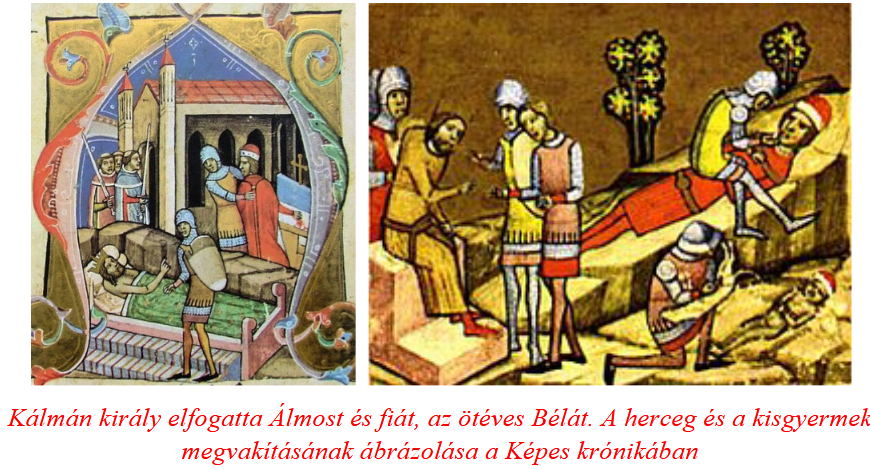
Compared to his contemporaries, the king, who had considerable education - hence the epithet "bookish" - was forced to resort to a bloody showdown as a last resort.
He saw the throne, his son's inheritance, and last but not least, the results of the country-building work carried out so far in danger. It would not be fair if this "bloody-handed" image of Kálmán were to remain. Although he did not like his predecessor, László, who supported Álmos, he continued the activities of the holy king. (It should be noted - although this is still debated among researchers today - that Saint László could only be buried in Várad when Kálmán died. Before that he was laid to rest in Somogyvár.) Although Kálmán relaxed László's strict laws, he still kept them in force. in fact, he extended it to almost all areas of life.
Kálmán was the king - and this also shows his education and greatness as a ruler - who announced that: "There should be no mention of strigas, who don't exist ." Therefore, King Kálmán did not say that witches do not exist at all, but only denied their mythical existence. However, the royal measure significantly reduced the number of witch hunts in Hungary. In addition to his excellent domestic policy, Kálmán also made his mark in foreign policy. Szent László took over and continued the operations of his great predecessor expanding towards the sea. Already in 1097, he occupied Dalmatia, and subsequently crowned himself Croatian king.

It should be noted that Kálmán did not plunder the developed coastal trading cities, but - although he took them under his control - he left their customs, economic and cultural activities. Until the end of the 13th century, Kálmán and his descendants were the masters of the Seaside /Croatia and Dalmatia/, which triggered a series of conflicts and wars with Venice. By the end of the 13th century, the Árpáds acquired the royal titles of Dalmatia, Croatia, Rama, Serbia, Lodoméria, Halics, Bulgaria and Kunarsia in addition to the Kingdom of Hungary.

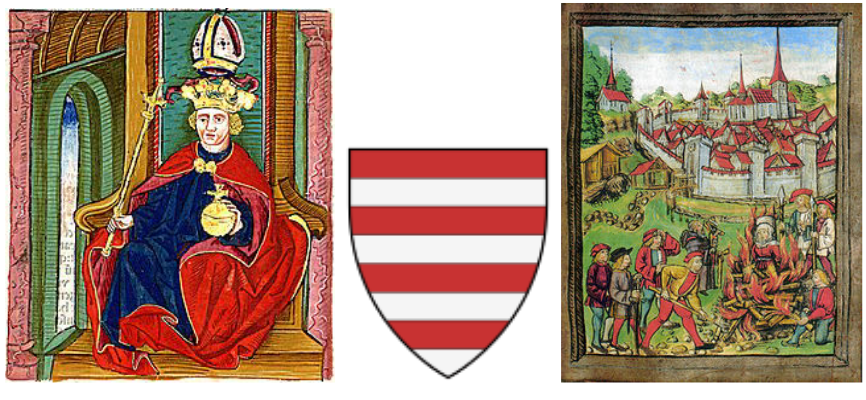 During the reign of King Kálmán, churches continued to be built, and the church grew stronger. Like his predecessors, Nagy - exercising the role of apostolic king - did not allow the pope to interfere in Hungarian affairs, especially not in the appointment of church dignitaries. Kálmán Könyves , one of the greatest Hungarian kings, died suddenly under mysterious circumstances. The strong suspicion that Kálmán was poisoned Draco (Venice's "poison policy" was well-known, which it practiced successfully for centuries.)
During the reign of King Kálmán, churches continued to be built, and the church grew stronger. Like his predecessors, Nagy - exercising the role of apostolic king - did not allow the pope to interfere in Hungarian affairs, especially not in the appointment of church dignitaries. Kálmán Könyves , one of the greatest Hungarian kings, died suddenly under mysterious circumstances. The strong suspicion that Kálmán was poisoned Draco (Venice's "poison policy" was well-known, which it practiced successfully for centuries.)
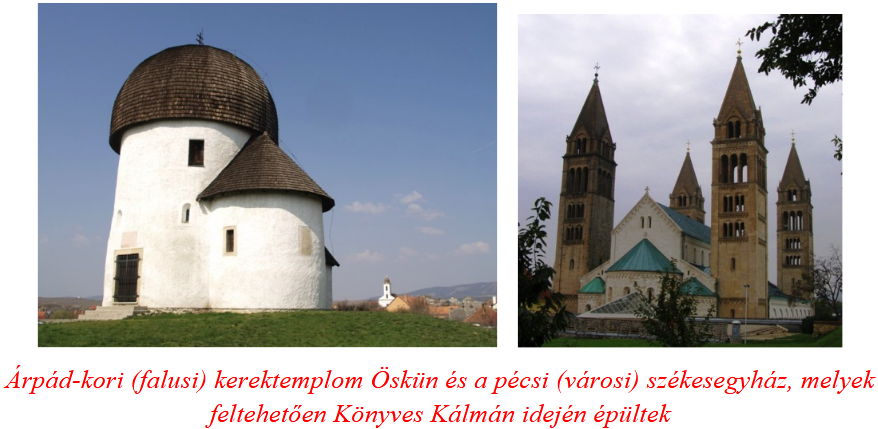
Thanks to the balance of power, after the death of Kálmán, his son, II. István (1116-1131) came to the throne. Despite the fact that he ruled the royal seat of the Árpáds for fifteen years, little is known about him. However, he was not a king without merit and with a weak hand. He was in constant battle with Álmos and his son, who did not abdicate. II. István first got involved in a war with Venice, which had its eyes on Dalmatia, which took place with mixed results. He once lost and then regained the Croatian kingdom. Stable Hungarian rule, however, only took place in II. He returned during Béla's II. István intervened in the feud of the Russian princes. When in 1123 Prince Jaroszláv , Byzantium and Bohemia threatened the Hungarian borders. Taking advantage of this, he attacked II. For István, the internal opposition led by Álmos.
(Whether we analyze this period, or the domestic political conditions of the previous or the following centuries, we must always realize one thing. The king who protects the unity of the country and strengthens the economic and cultural development is the opposition - be it a brother or another Hungarian interest group - used all means to gain power. Often using the not exactly altruistic help of external great powers.)
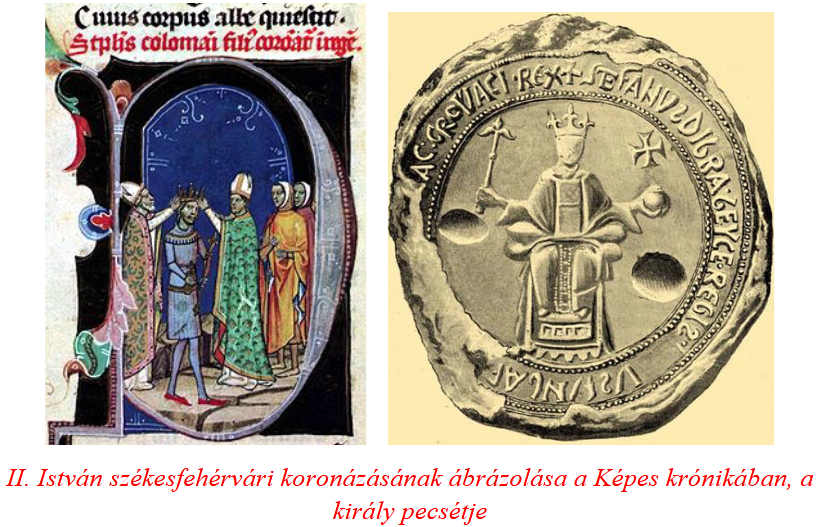
The internal opposition relying on foreign forces II. Stephen defeated him. Álmos fled to Byzantium - where he died a short time later - and his son Béla was hidden in the Pécsvárad abbey by Álmos' followers. The king later took in Prince Béla with kindness and treated him in a manner worthy of his rank. He even got him a wife. Béla Ilona , the daughter of the ruler of Uros (Serbia) . II. István fell seriously ill three times, it is likely that they tried to poison him. The assassination attempt was successful for the fourth time, but it is also possible that dysentery, common at this age, took away the only thirty-year-old ruler.
II. István had no successor, so Álmos's son, Béla Vak, became the Hungarian ruler. The then twenty-three-year-old was driven by hatred, which - along with the feuding lords - was controlled from behind by his power-hungry, malicious wife, Ilona. Ilona made sure that the family was not left without offspring. She gave birth to six children for Béla Vak during his ten-year reign. Four boys and two girls. The successor was the first-born Géza , while László and Prince István acted as counter-kings against the legally elected ruler. (See the highlighted list of the discussed century of the ruler list!)
Árpád kings
István I (Saint) 997/1000-1038
Péter 1038-1041
Aba Sámuel 1041-1044
Péter the Second 1044-1046
András I
1046-1060 Béla I 1060-1063
Solomon 1063-1074
Géza I 1074- 1077
I. (Saint) László 1077-1095
(Könyves) Kálmán 1095-1116
II.
Stephen 1116-1131 II.
(Blind) Béla 1131-1141 II.
Géza 1141-1162 III.
Stephen 1162-1172 II.
Viceroy László 1162-1163 IV.
Viceroy István 1163-1165 III.
Béla 1172-1196 Imre 1196-1204
III.
László (minor) 1204-1205 II.
Andrew 1205-1235 IV.
Béla 1235-1270 István V 1270-1272
IV.
(Kun) László 1272-1290 III. András 1290-1301
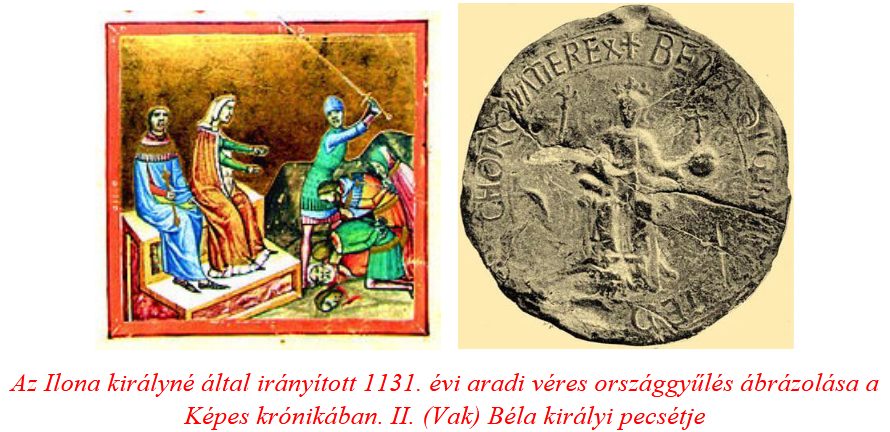 II. Béla (Blind) (1131-1141) was marked by the bloody parliament of Arad, during which the heads of 68 opposition lords fell to the ground. The parliament of 1131 began with the inflammatory speech of the power-seeking wife, Ilona, which then ended in bloodshed unprecedented in Hungarian history. But not only the 68 lords, but also their family members were exterminated, and their estates were distributed among the followers of Béla and Ilona. The queen strictly watched her husband's every move, but she did not prevent the king from drinking wine. After ten years of reign II. Béla was presumably killed by excessive drinking.
II. Béla (Blind) (1131-1141) was marked by the bloody parliament of Arad, during which the heads of 68 opposition lords fell to the ground. The parliament of 1131 began with the inflammatory speech of the power-seeking wife, Ilona, which then ended in bloodshed unprecedented in Hungarian history. But not only the 68 lords, but also their family members were exterminated, and their estates were distributed among the followers of Béla and Ilona. The queen strictly watched her husband's every move, but she did not prevent the king from drinking wine. After ten years of reign II. Béla was presumably killed by excessive drinking.
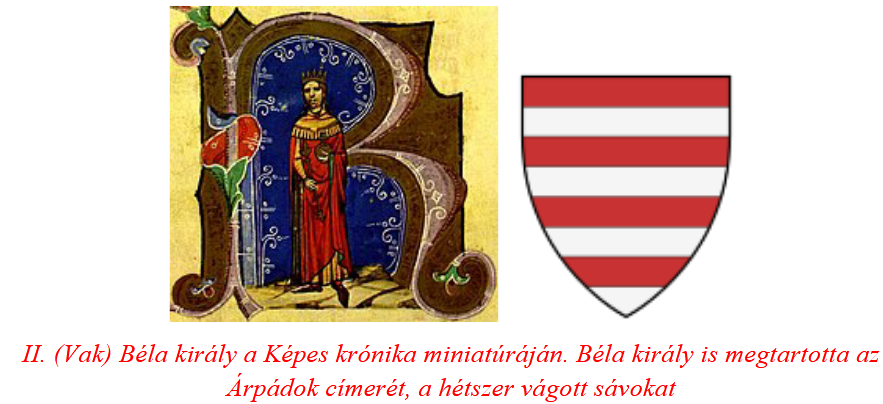
However, let's not be unfair when analyzing Béla's ten-year reign. Don't just remember revenge and his wicked wife. Béla Vak's foreign and domestic policies were both successful. He placed the Czech and Kiev rulers on his side, which also put an end to the hostile policy of the Poles. He increased the territory of the country when most of Dalmatia, which had been lost in the meantime, was returned to Hungary. Furthermore, he conquered Bosnia, as it was then called, Rama. Béla established a good relationship with the church leaders, which he established with significant donations. For example, the burnt-down Abbey of Pannonhalm was also restored with royal funds. The organized issuance of diplomas and the setting up of the chancellery was already in II. It started in the court of King Béla. Béla involved the royal council in all his decisions, even if he was forced to - since he was blind. However, coercion was accompanied by wisdom when he made the advisers partly his followers and partly his "co-ruler".
Bélat's son, II. Géza (1141-1162) succeeded him on the throne. Instead of the ten-year-old child, his mother Ilona and her relative Belos ruled the country. However, they made sure that the unity and independence of the country remained intact. This policy was not against their own interests either. against the army of Austrian Duke and Margrave Henrik, who attacked the country, should be highlighted

Less is known about Béla's eldest son, Géza, that he was a talented, strong-handed king. He not only protected the heritage of the Árpáds, but further increased it. In 1147, another attack hit the country, this time from the east. Boris , the Russian claimant to the throne - who considered himself the son of Kálmán - marched against Géza. The difficulties were increased by the arrival in our country of the crusade led by Otto of Freising (The "Crusaders" who marched through Hungary in the previous decades were marauding armies with a bad memory, which Kálmán Könyves was forced to destroy, protecting the lives and values of the Hungarian population.)

The Western "Crusaders" robbed and looted on the grounds that the Hungarians were a pagan people who needed to be converted. They claimed this about the country where two archbishoprics, twelve bishoprics and hundreds of abbeys and churches were already operating at that time. The country ruled by the Árpád dynasty, the ruling family that gave the world the most saints, was accused of paganism. The chronicler Bishop Ottó notes with admiration mixed with envy how powerful the Árpád kings are and how much authority they have, and that about two-thirds of the tax increases the royal treasury. An enemy bishop and general proves that the Árpáds' country, even if it has to deal with throne disputes from time to time, is how united and strong it is. The king has such power and authority that did not exist anywhere else in Europe at that time. II. In addition to the constant threat of the German-Roman emperor, Géza fought with Venice, Byzantium (the latter wanted to obtain the Hungarian throne at all costs), the Kuns, the Rus princes, and not to mention the internal dissidents.
In addition to his military and domestic political tasks, Géza deserves to be classified among the great kings with his extensive foreign policy and significant church activities. The Kingdom of Hungary even had relations with distant Egypt and Hvarezm.
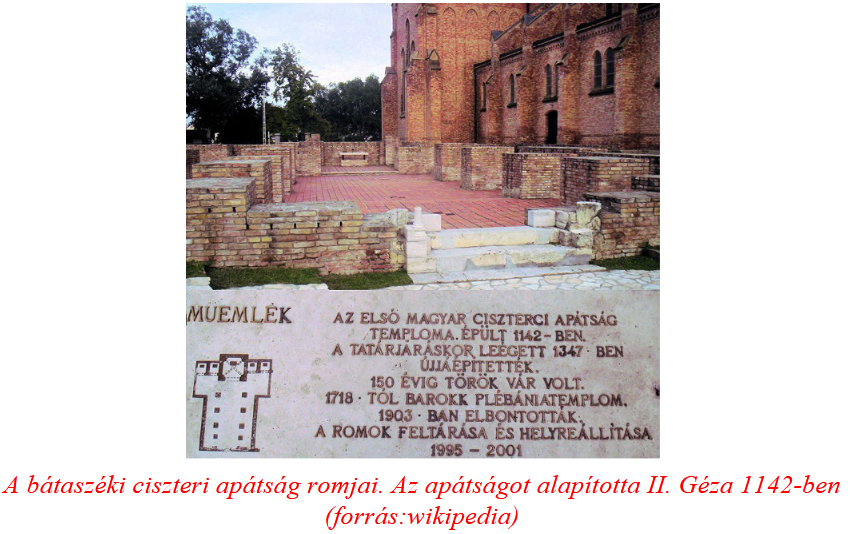
After the king's death, his son III. István (1162-1172) came to the throne, which triggered another throne dispute. Béla Vak's sons claimed the throne as counter-kings. ARC. István was Byzantium, with whom, however, the empire failed. scheming Mánuel , the lord of Byzantium, then resorted to other tactics. Prince Béla, who was also brought up in Byzantium , III. István took his younger brother under his patronage. III. who died at the age of 26. After King István, one of the most talented rulers of the 12th century and Hungarian history, Béla, came to the throne.
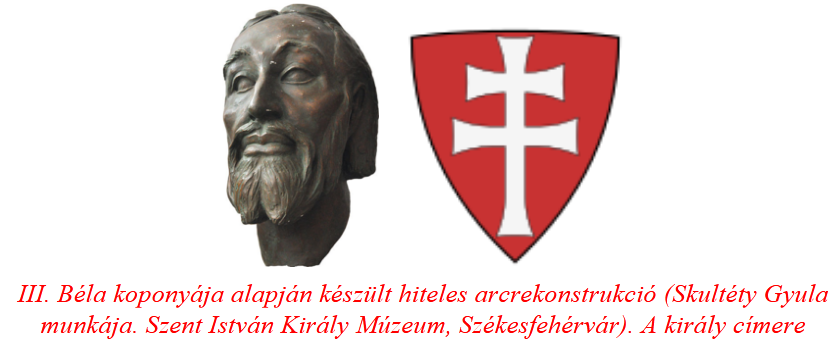
The "Prince of the Golden City", as the new Hungarian king was called after the rich and powerful Byzantium, was a lucky choice. Not so much for Byzantium, but much more for Hungary. III. Béla (1172-1196) put all his knowledge, strength and education at the service of his country.
The nearly quarter of a century that III. It meant the reign of Béla, it was one of the heydays of the Kingdom of Hungary. This was shown, for example, in the income of the kingdom, which was the third most significant in Europe after the two empires (Byzantine and German-Roman). It rivaled English and French tax revenue. Among other things, the creation of the royal chancellery resulted in a rapid increase in literacy in Hungary. Furthermore, King László was canonized during his reign. By the end of the 12th century, the territory of the country reached its largest extent.

III. Béla fulfilled what was "Hungary's mission" even when it played the role of a bridge between East and West, and peace reigned in the Carpathian Basin. He achieved this by calling in priests and monks, building churches and monasteries, and using the skillful technique of power learned in Byzantium. However, it should also be mentioned that III. Béla was the first king who donated entire counties to individual lords in order to win their support. This was the beginning of the process that broke the hitherto relatively intact unity of the royal property system. The king, who was barely past fifty years old, died unexpectedly during a sacrifice. As the first great king of the century, Kálmánt, was killed by a doctor named Draco, III. According to the chronicle, Béla was poisoned by the bishop of Pécs Calamus
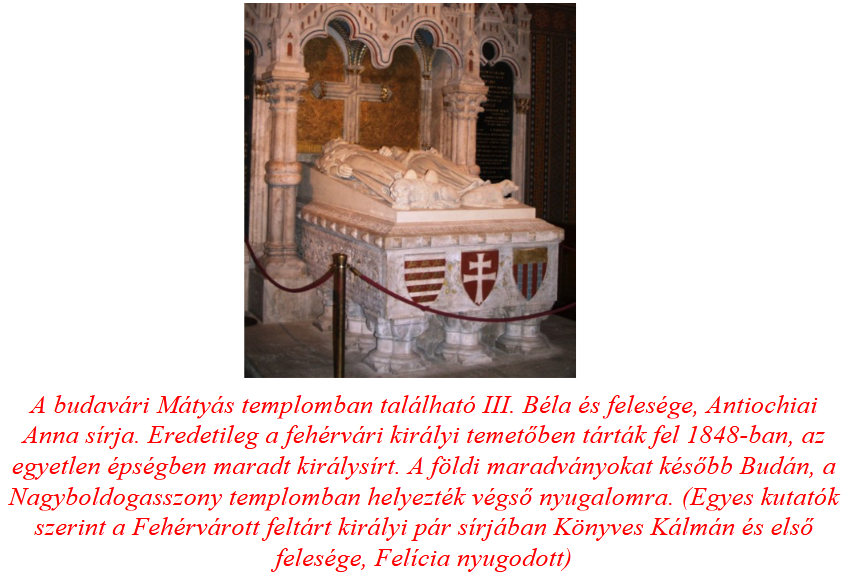
Author: Ferenc Bánhegyi
The parts so far can be read here: 1., 2., 3., 4., 5., 6., 7., 8., 9., 10., 11.


